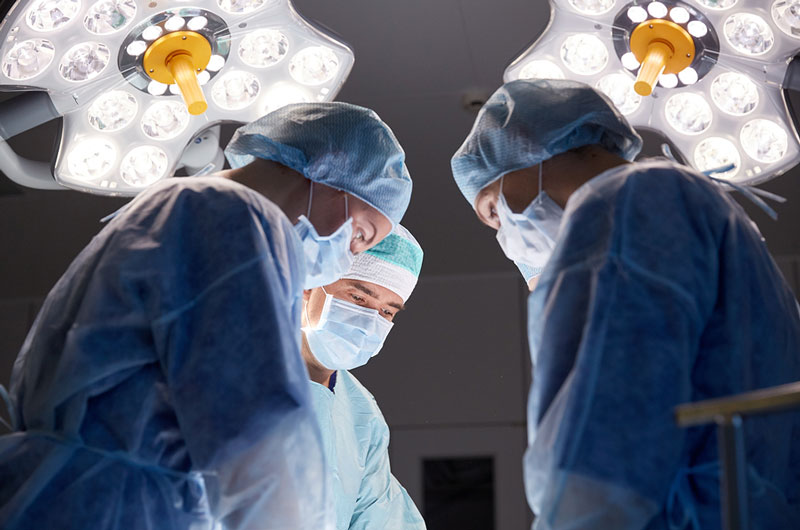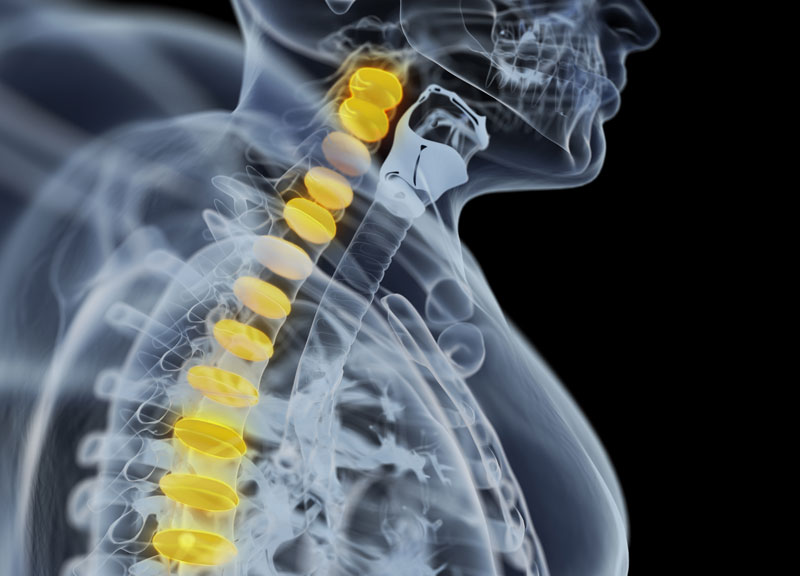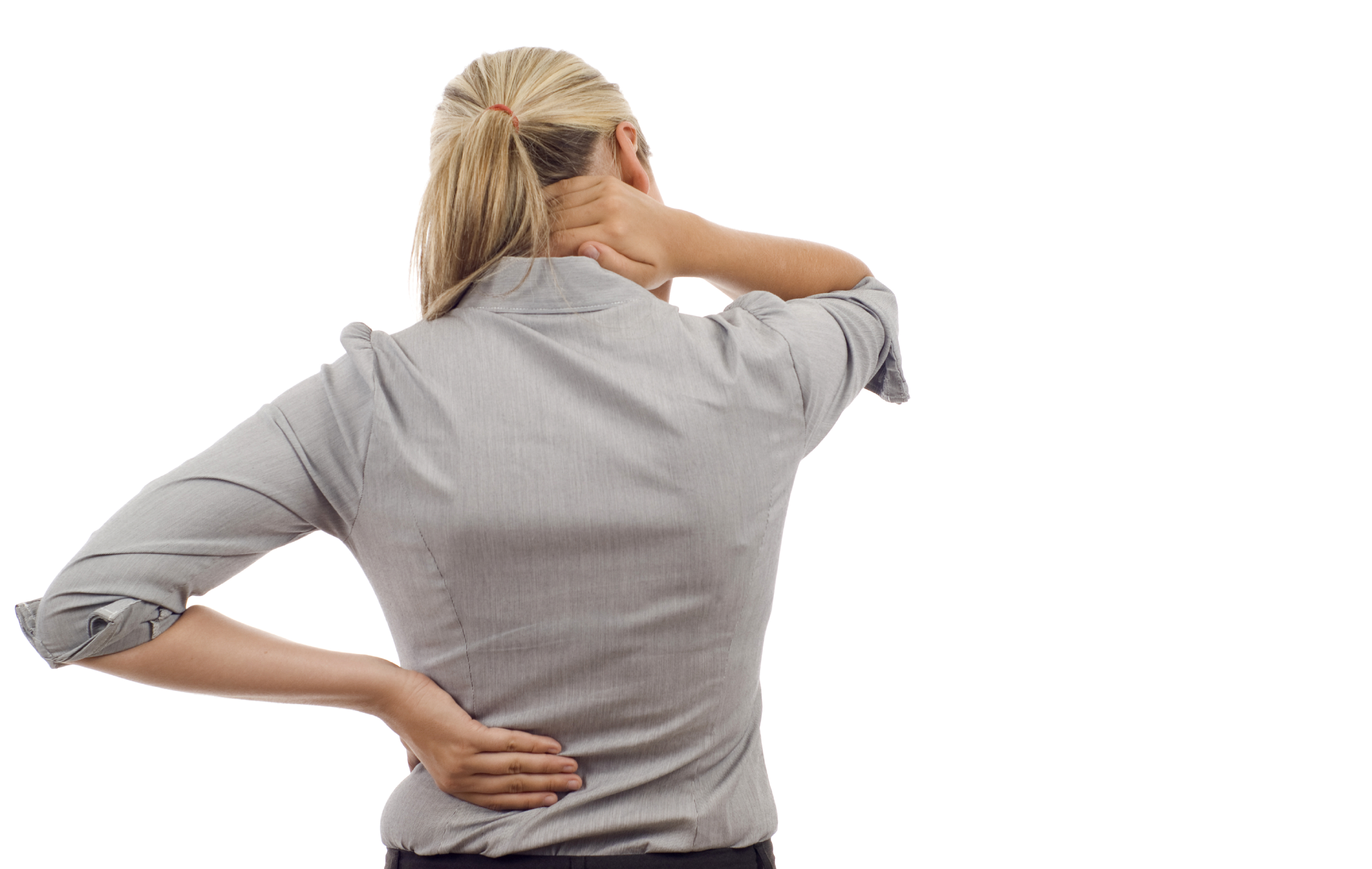A spinal cord injury is damage to a part of the spinal cord or nerves right at the end of the spinal canal. This often results in permanent changes in sensation, strength, and various other body functions below the injury site.
If you have experienced a spinal cord injury, it is normal to feel as if all aspects of your life can be affected. With newer technological advancements many physicians and researchers are optimistic about the possibility of repairing spinal cord injuries.
Today, various treatments and rehabilitation options allow patients with spinal cord injuries to lead confident, comfortable, productive, and independent lives.
Symptoms
A patient’s capacity to control limbs following a spinal cord injury will depend on the following two factors:
1. The site of injury along your spinal cord
2. Severity of injury to the spinal cord.
After an injury, the lowest part of spinal cord functioning normally is referred to as the neurological level of injury. The severity of injury is known as “the completeness”. It can be further categorised into the following:
Complete – An injury is referred to as complete when all feeling (sensory) and capacity to control motor function (movement) are lost below the spinal cord injury.
Incomplete – Sensory or motor function below the affected area is referred to as incomplete. The injury has varying degrees.
Paralysis resulting from a spinal cord injury may be referred to as the following:
Tetraplegia – This is also referred to as quadriplegia, which means that the patient’s hands, arms, trunk, legs and pelvic organs get affected by spinal cord injury.
Paraplegia – This kind of paralysis affects all or a part of the legs, trunk, and pelvic organs.
The health care team will perform some tests with an aim to determine the neurological level as well as completeness of injury.
Usually, spinal cord injuries of any kind may result in any one or more of the following signs and symptoms:
- Loss of movement
- Loss of sensation. The patient may lose the ability to feel heat, cold and touch.
- Loss of bowel or bladder control
- Exaggerated reflex activities
- Spasms
- Significant changes in sexual function
- Changes in sexual sensitivity and fertility
- Pain
- The intense stinging sensation caused due to damage to the nerve fibers in your spinal cord
- Difficulty breathing
- Problems with coughing or clearing secretions from the lungs
Signs and Symptoms – When to Consider Emergency
Post accident, emergency signs and symptoms of spinal cord injury may include:
- Severe / unbearable back pain or pressure in your neck, head or back
- Weakness, incoordination or paralysis in any part of your body
- Numbness
- Tingling or loss of sensation in your fingers, hands, feet or toes
- Loss of bladder or bowel control
- Difficulty with balance and walking
- Trouble breathing after injury
- An oddly positioned or twisted neck or back
When to Seek Medical Assistance
Significant trauma / blow to neck or head demands immediate medical evaluation. This is to assess any possibility of a spinal injury. Almost all trauma victims should be examined for spinal injury. This is because serious spinal injury does not show any sign immediately. In case, it is not diagnosed on time, severe injury may occur. The patient may experience paralysis or numbness or paralysis immediately. Later on, other problems such as swelling or bleeding occurs in or around the spinal cord. Complications may arise if immediate medical attention is not given.
Precautions to Take
If you suspect your loved one suffering a back or neck injury, follow the precautionary instructions listed below:
- Strictly avoid moving the injured person. This will prevent permanent paralysis and many other serious complications that may result due to the injury.
- Call 911 or local emergency number for medical assistance.
- Focus on keeping the person still.
- It is advisable to place heavy towels on both sides of the neck. You may also hold the head and neck. This will prevent them from moving until the doctors or emergency care arrives.
- Make sure you provide basic first aid. This may include stopping bleeding and making the person comfortable. This should be done without moving the head or neck.
Causes
Common Causes of Spinal Cord Injury
- Motor vehicle accidents
- Falls
- Acts of violence
- Sports and recreation injuries
- Alcohol use
- Cancer
- Arthritis
- Osteoporosis
- Inflammation of the spinal cord
Traumatic Injury
There are a number of causes of spinal cord injuries. These may result from:
– Damage to the vertebrae
– Damage to Ligaments or disks of the spinal column
– Damage to the spinal cord itself
– Gunshot penetrating spinal cord
– Knife penetrates / cutting the spinal cord
In most cases, a traumatic spinal cord injury may be a result of a sudden, traumatic blow to the spine, which causes crushes, fractures, dislocation, or compresses vertebrae (one or more).
The patient may experience additional damage over days or weeks due to swelling, bleeding, inflammation and accumulation of fluid in and around the spinal cord.
Non-traumatic Injury
This may be caused by the following conditions:
- Arthritis
- Cancer
- Inflammation
- Spinal infections
- Disk degeneration of the spine
Risk Factors
Spinal cord injury usually stems from an accident. It can happen to anyone. However, there are certain factors that put you to higher risk sustaining a spinal cord injury. These include:
Male – Men are more prone to traumatic spinal cord injuries than women.
Age – The injury is common among those between the ages of 16 and 30. Also, those older than 65 will suffer from this problem due to vulnerability to falls.
Risky Activities – Participation in risky behavior such as diving into too-shallow water or playing sport sans wearing the safety gear or taking proper precautions may lead to spinal cord injuries. Motor vehicle crashes may cause spinal cord injuries in those under the age of 65.
Disorder of Bone or Joint – Any minor injury may lead to a spinal cord injury, especially if you have another disorder affecting bones or joints, such as osteoporosis, arthritis etc.
Complications from Injury
The body functions undergoes a lot of changes. This may be disturbing and depressing. The rehabilitation team at Premier Brain and Spine will help you develop the strategies required for addressing the changes. The areas often affected include:
Bowel Control – This is often altered. You would need a high – fiber diet may help regulate your bowels. The rehabilitation will teach you techniques to optimize your bowel function.
Bladder Control – Bladder stores urine from kidneys. Unfortunately, the brain may not be able to control bladder function due to the injury with message carrier (the spinal cord). This puts patients at risk of urinary tract infections, kidney infections and kidney / bladder stones. Rehabilitation will help you learn techniques to help empty your bladder.
Sensation of Skin – It is possible that the patient loses part or all skin sensation under the neurological level of your injury. So skin cannot send a message to brain when it is injured or under prolonged pressure, heat or cold. This may make the patient prone to pressure sores. Hence, changing positions frequently is important.
Respiratory System – Your injury may make it more difficult to breathe and cough if your abdominal and chest muscles are affected. These include the diaphragm and the muscles in your chest wall and abdomen. Medications and therapy will help deal with these problems.
Circulatory Control – The problem may range from low blood pressure when you rise (orthostatic hypotension) to swelling of extremities. It increases your risk of developing blood clots. It may result in a life-threatening rise in blood pressure (autonomic hyperreflexia).
Muscle Tone – Uncontrolled tightening or motion in the muscles (spasticity) is experienced by patients. They may also suffer from soft and limp muscles lacking muscle tone (flaccidity).
Fitness and Wellness – It is common for patients to experience weight loss and muscle atrophy after a spinal cord injury. Restricted mobility may result in sedentary lifestyle, increasing risk of obesity, diabetes, and cardiovascular disease. Help from dietitian and physical and occupational therapists can help you develop a fitness and exercise program.
Pain – Pain in muscles or joint from overuse of a specific muscle groups may be experienced by the patient. Neuropathic or central pain (nerve pain) may occur post spinal cord injury (incomplete).
Sexual Health – The injury will affect sexuality, fertility and sexual function. Men may notice significant changes in erection and ejaculation. Women can face problems related to lubrication. Doctors, urologists and fertility specialists will offer help with sexual function and fertility.
Depression – Coping with changes and living with pain results in depression. Therapy and medications will help.
How to Prepare for your Appointment
Your doctor may ask you the following questions before examining you:
- What circumstances led to your injury?
- When did it occur?
- What are your job responsibilities?
- With whom do you live?
- Does you or anyone in your family have a history of blood clots?
- Do you have any other medical conditions?
Tests and Diagnosis
The doctor in the emergency room may be able to rule out a spinal cord injury. This is done through careful inspection. The doctor will also examine sensory function and movement. He/she will also ask some questions related to the accident.
Emergency diagnostic tests are done when the injured person complains of neck pain or is not fully awake. These tests may also be taken if the patient shows obvious signs of weakness or neurological injury.
These tests may include:
X-rays – The tests will be ordered for those suspected of having a spinal cord injury after trauma. It shows the vertebral (spinal column) related issues, tumors, fractures or any degenerative change in the spine.
Computerized Tomography (CT) Scan – The test ensures enhanced look at abnormalities showed on an X-ray.
Magnetic Resonance Imaging (MRI) – The test is very helpful to closer look at the spinal cord and identifying blood clots, herniated disks, or other masses compressing the spinal cord.
Neurological Exam – This is conducted a few days after injury, after swelling may have subsided. It tests muscle strength and ability to sense light touch and a pinprick.
Treatment Options and Drugs
Unfortunately, there’s no way doctors and specialists can reverse damage to the spinal cord. However, the scientists and researchers are continually working on new treatments and possibilities including prostheses and medications. These options may promote nerve cell regeneration. They also also consistently look for treatment options that will improve overall nerve functions after a spinal cord injury.
The treatment is aimed at preventing further injury and promoting capacity within patients to return to an active and productive life.
Emergency Measures
It is crucial that patients get urgent medical attention to reduce impact of any head or neck trauma. This is also the reason treatment for a spinal cord injury starts right at the scene of the accident. The emergency medical personnel will immobilize the spine as gently and quickly as possible. This is done by using a rigid neck collar and a rigid carrying board. These are used to transport you to the hospital.
Initial (acute) Stages of Treatment
The physicians will perform the following in the emergency room:
- Immobilizing the neck for prevention against spinal cord damage in future
- Maintain breathing ability
- Preventing shock
- Avoiding any possible complications, including urine or stool retention, cardiovascular problems, respiratory issues, deep vein blood clot formation in the extremities
Doctors may sedate you. This is done to prevent you from moving and sustaining more damage while undergoing various diagnostic tests for spinal cord injury.
If you are diagnosed with a spinal cord injury, you will be admitted to the hospital for treatment. The staff may even transfer you to a regional spine injury center. Here, you will be under the surveillance of a team of medical experts including:
- Neurosurgeons
- Orthopedic surgeons
- Spinal cord Injury specialists
- Psychologists
- Nurses
- Therapists
- Social workers with expertise in spinal cord injury
Medications – Acute spinal cord injury may be treated using intravenous (IV) methylprednisolone (A-Methapred, Solu-Medrol). Some patients may show signs of mild improvement with methylprednisolone every eight hours of injury. It helps with reducing nerve cell damage and decreasing inflammation near the site of injury. This is not a cure for a spinal cord injury.
Immobilization – Some patients may require traction for spinal stability. This also helps with bringing the spine into proper alignment. Physicians may prescribe a rigid neck collar or a special bed to promote immobilization of your body.
Surgery – In many cases, surgery becomes a necessary option for removing bone fragments, foreign objects, fractured vertebrae, or herniated disks that may be responsible for compressing the spine. Stability of the spine for prevention of any deformity / pain in the long run can be achieved by surgery.
Experimental Treatments – Many scientists are researching new ways to control cell death, inflammation and promote nerve regeneration. You should consult your physician about the availability of these treatments.
Round The Clock Care
Once the initial injury is healed or the condition stabilizes, physicians will turn their attention to prevent the following secondary issues that may arise:
- Deconditioning
- Blood clots
- Muscle contractions
- Respiratory infections
- Pressure ulcers
- Bowel and bladder related issues
The hospitalization period will depend on your overall condition and any medical problems you are facing. The physicians will check if you are able to participate in various treatment / therapies prior to transferring you to a rehabilitation facility.
Rehabilitation
During the initial stages of recovery, the rehabilitation team members at Premier Brain and Spine will start working with you. The team may include:
- Physical therapist
- Doctor specializes in spinal cord injuries or physical medicine (physiatrist)
- Occupational therapist
- Recreation therapist
- Dietitian
- Rehabilitation nurse
- Rehabilitation psychologist
- Social worker
The therapists focus on the following during the early stages of rehabilitation:
- Maintenance and strength of existing muscle function
- Redevelopment of fine motor skills
- Learning adaptive techniques to help patients accomplish day-to-day tasks
- Information on the overall impact of a spinal cord injury and ways to prevent complications
- Expert advice on rebuilding and increasing quality of life
- Learning new skills and use of equipment and technology that facilitate you live independently.
- Techniques to resume your favorite activities and hobbies.
Medications
Doctors may prescribe medications to help you manage the effects of a spinal cord injury. Some of the most common ones include pain killers and those for controlling muscle spasticity. In many cases, medications that improve bowel control, bladder control, and sexual function are also prescribed.
Latest Technologies
Expert professional help is available for people with spinal cord injuries. Modern and technologically advanced medical devices can help people with spinal cord injuries develop confidence, independence, and mobility. Many devices are developed to help restore daily function.
These include:
Advanced Technology Wheelchairs – Wheelchairs have seen significant improvements over the years. Today, wheelchairs are lighter in weight, and are highly advanced. The chairs help those with spinal cord injury stay comfortable, confident, and mobile. Certain Wheelchairs can even climb stairs or travel over a rough terrain. Speak to your physician about the best wheelchair for you.
Computer Adaptations – This is extremely helpful for those with limited hand function. It helps them operate computer keys and other functions. The adaptations range from simple to complex, including voice recognition, key guards, etc.
Electronic Aids – These are used for daily living. All devices using electricity can be easily controlled using an electronic aid to daily living (EADL). Patients can easily turn on and off these devices using a switch or remote controlled by voice or computer.
Electrical Stimulation Devices – Also referred to as functional electrical stimulation (FES) systems, these sophisticated devices use electrical stimulation to help produce actions. The stimulators help with controlling arm and leg muscles. These facilitate individuals with a spinal cord injury to walk, stand, reach and grip.
Robotic Gait Training – This is an emerging technology. It can be used for retraining your ability to walk following a spinal cord injury.
Prognosis and Recovery
Your doctor may not be able to provide you with a prognosis right away. Usually, recovery starts a week to six months after a spinal cord injury. In certain cases, it can take up to a year or even longer before the recovery process begins.
Coping and Support
Any accident resulting in paralysis is certainly a devastating event. Most people have difficulty accepting a sudden disability. The situation can be frightening and confusing. Adapting to a disability is also very difficult. A spinal cord injury can have a huge impact on everyday activities, relationships, your job, and long-term happiness.
It is important to understand that recovery from such an event takes time. Staying motivated and getting the support you need will help you through the process.
Grieving
It is natural to experience a period of mourning and grief during the initial period of injury. The process may be different for everyone. Usually, patients and their loved ones go through feelings of denial, anger, sadness, and other emotions.
The grieving process is necessary for recovery. It is a natural process and crucial for a healthy recovery. Speaking to a psychologist, social worker, or psychiatrist can help during the grieving process.
Counselor
A spinal cord injury can affect your sexual health. It is still possible however to have a fulfilling emotional and physical relationship with your partner. A professional counselor or therapist can help you communicate with your partner and express your feelings. With regular checkups and treatment, you can ensure a satisfying future.
Stay Positive
Spinal cord injury can affect your life and the lives of those closest to you. Many people tend to focus on things that they cannot do. It is important however to focus on the various treatment options available. Advanced medical technology has increased access to the availability of treatments and devices. This is a main reason why many people with spinal cord injuries are active today. You can see them participating in sports, having rewarding jobs, and live an enjoying lifestyle.
Advances newer treatments in stem cell research and nerve cell regeneration have helped patients with spinal cord injuries recover quicker. Consistent research and studies are being conducted for people with spinal cord injuries.
How to Prevent Spinal Cord Injury
It is possible to reduce the overall risk of spinal cord injury by following the tips mentioned below:
Safety Inside your vehicle – Children should always wear a seat belt or sit in a safety seat appropriate for their age. The back seat is the best option for children to protect them from air bag injuries.
Safe Driving – One of the most common causes of spinal cord injuries are car accidents. You should always focus on driving safely. Always wear a seat belt when driving or riding as a passenger in a vehicle.
Diving Precautions– It is crucial to check water depth prior to diving. Avoid diving head first into a pool less than 9 feet (3 meters) deep. Also strictly avoid diving into an above-ground pool. If you do not know the depth of the pool, do not dive.
Stay Away from Falls – Take precautions against falls. For instance, you can install non-slip mats on tile floors and in the shower. Always use a step stool and grab bar to reach objects stored in high places.
Don’t Drink and Drive – DON’T drive under the influence of alcohol or drugs.
Be Cautious – It is important to take precautions while playing sports. You should wear the recommended protective apparel to help in avoiding injury.
The information provided on this website is for informational purposes only and is not intended to take the place of consultation with your physician. Any questions that you may have regarding the diagnosis, care or treatment of a medical condition or any products described in this web site should be directed to your physician. If you are seeking specific medical advice, please contact your physician or call 911 in the case of an emergency.





